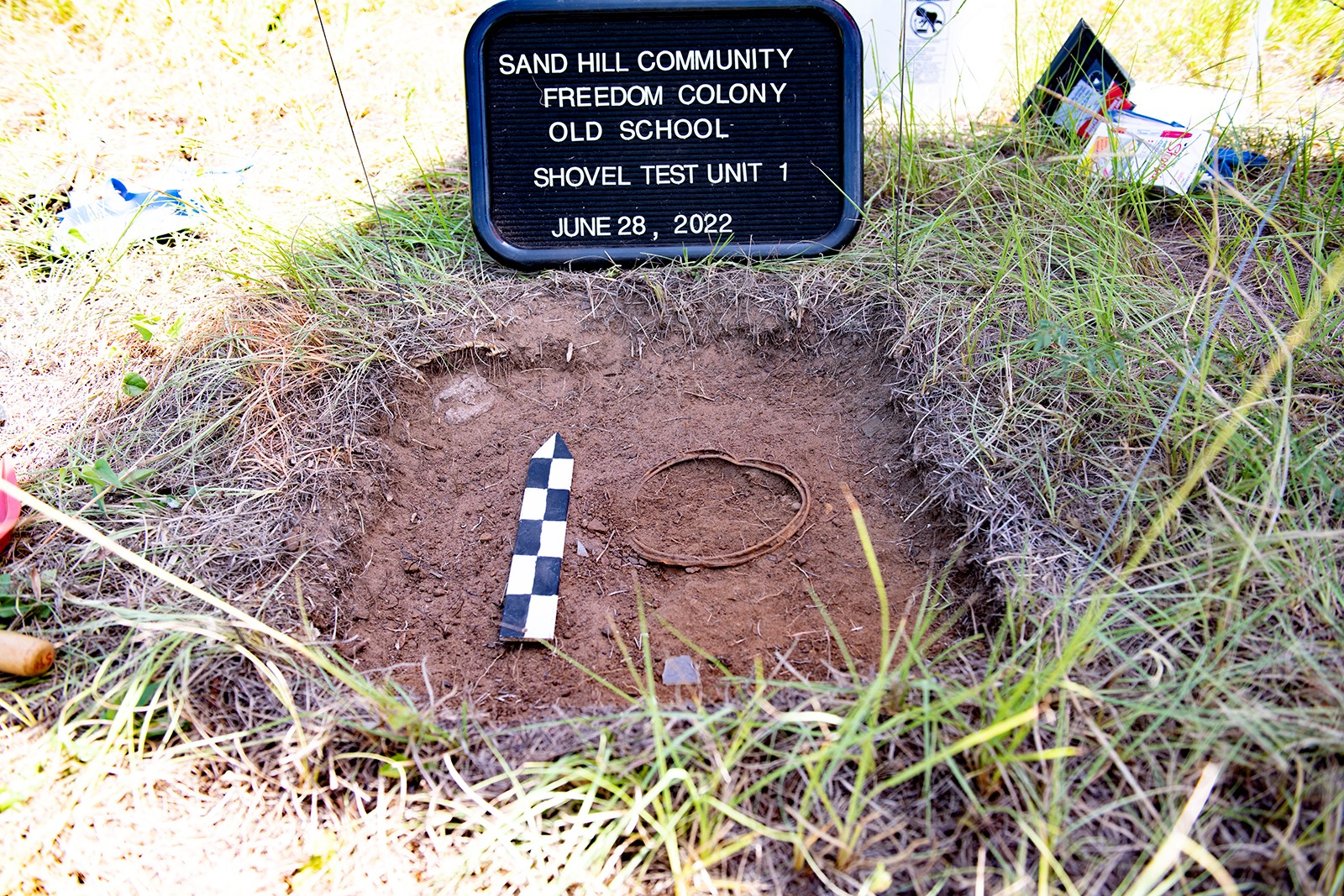By Dr. George Avery
Cultural heritage coordinator in SFA’s Department of Anthropology, Geography and Sociology
There have been a number of archaeological projects in Texas that have focused, either directly or indirectly, on Freedom Colonies. These are African American settlements established after the emancipation of enslaved peoples near the end of the Civil War. Not all freed enslaved people became part of a Freedom Colony — some stayed in their original location and became sharecroppers. The men generally were farmers, and the women were cooks and maids. The Freedom Colonies, though, were communities that were fairly independent of the former planters and generally started in 1870. The Freedom Colonies Project, led by Dr. Andrea Roberts, associate professor of urban and environmental planning and co-director of the University of Virginia’s Center for Cultural Landscapes, has documented over 500 Freedom Colonies in Texas.
I have worked at two Freedom Colonies, including Sand Hill Community in Nacogdoches County and Shankleville Community in Newton County. When doing any type of investigations at Freedom Colonies, it is important to put together a team with a multitude of talents — you can’t learn about a Freedom Colony by doing archaeology alone. You also need, at least, a genealogist, oral history specialist, and cemetery specialist. It’s also best if you have someone with skills in videography and geophysical studies techniques.
I received a grant from the Summerlee Foundation to be able to hire a team of professionals, including Jackson Clay, videographer; Dr. Syreeta Green, educator; Archie Rison, genealogist; and Dr. Rolonda Teal, anthropologist. Archaeological assistants funded by the grant included SFA students Briana Cox, Maggie Roberts and Noelle White. Other archaeological assistants included Tom Middlebrook and Kent Tannery from the East Texas Archaeological Society and John Jefferson, Keith Stephens and Lori Horne from the Deep East Texas Archaeological Society. Tannery, Jefferson, Stephens and Horne are also Texas archeological stewards, which is a designation for nonprofessional archeologists who have received training similar to professional archeologists.
Many other Freedom Colony projects are ongoing in Texas. Archaeologist Dr. Maria Franklin, a professor in the University of Texas at Austin’s Department of Anthropology, has been working with the descendants of the Antioch Colony south of Austin; and archaeologist Dr. Timothy Sullivan, professor emeritus at the Dallas College Richland campus, has written an article on the Little Egypt Freedom Colony in Dallas (2022, Bulletin of the Texas Archeological Society, Volume 93:59-86).
While not using the term “Freedom Colonies,” the Texas Department of Transportation has been focusing on the sites of African Americans who did not become sharecroppers but rather acquired their own property after emancipation. Franklin has been involved in telling the public about an African American blacksmith in the Bolivar community near Denton, Texas, in addition to archaeologist Douglas Boyd and Dr. Alex Menaker of Stantec Inc. Both Boyd and Franklin have also worked on the Ransom Williams farmstead south of Austin, which is another TxDOT project and a narrative example of an African American buying the land in the 1870s and owning the property until the early 1900s.
All the examples of archaeological projects focused on freed African Americans buying property after the Civil War have emphasized the fact that, to the history of sharecroppers, cooks and maids, must be added the ownership of property and management of labor in all of its many uses and forms. A more complete history of African Americans is thereby attained.
Learn more about the research happening in SFA's Department of Anthropology, Geography and Sociology.
 Axe ’Em, Jacks!
Axe ’Em, Jacks!
